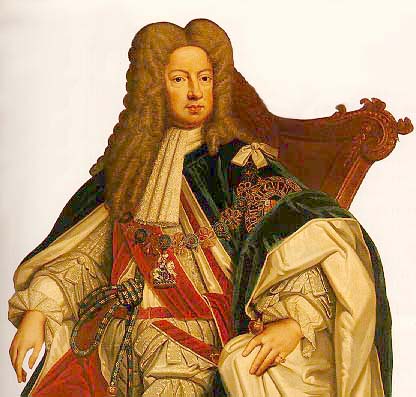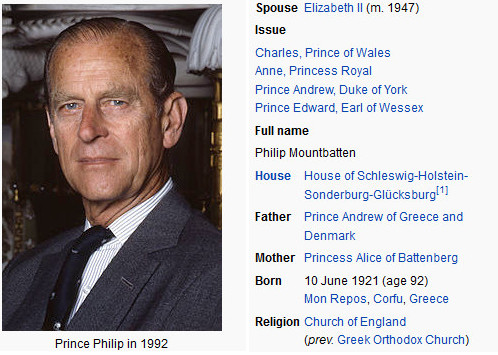Yes they have, for the last 3 centuries
Australia Day 2022 reminded me that I’m still waiting for this country to become independent and farewell its British Queen. Having an English monarch as head of state is especially galling for this German migrant since the Windsors are of course German to their bootstraps.
Don’t get me wrong: I admired Elizabeth Regina for her dedication and endurance. Now that she has left us, it’s time for a little history.
By 1450, Central Europe was officially known as the Holy Roman Empire of the German Nation (German version: Heiliges Römisches Reich Deutscher Nation, Latin: Imperium Romanum Sacrum Nationis Germanicæ).
After Queen Anne’s death in 1714, at the age of 54, George I ascended the British throne as the first monarch of the House of Hanover. Over fifty aristocrats bore closer blood relationships to Queen Anne, but the Act of Settlement 1701 prohibited Catholics from inheriting the throne, and George was Anne’s closest living Protestant relative. I’m not making this up.
Understandably, the English didn’t care much for George the German, and it didn’t help that he didn’t speak a word of English. His son George II occupied the throne after his father’s death on 11 June 1727, and his wife was another German: the Margravine Caroline of Brandenburg-Ansbach. George II died in 1760 and was succeeded by his son George III.
The third George was King of Great Britain and King of Ireland from 1760 until the union of these two countries on January 1 1801. Now he became King of the United Kingdom of Britain and Ireland.
George III also held the titles Duke of Brunswick-Lüneburg and Prince-elector of Hannover in the Holy Roman Empire until his promotion to King of Hanover on October 12, 1814. He was the third British monarch from the House of Hannover but at least he was born in Britain, and English was his first language.
You’d think this would’ve been the end of the Germans in Britain but you’d be wrong. George III was succeeded by his sons George IV and William IV, who died young – in 1830 and 1837 respectively – without living heirs. This left the young Princess Victoria, the only legitimate child of the fourth son of George III, as the next in line.
She became Queen of the United Kingdom and its dominions at the tender age of 18. Victoria was German, of course – the daughter of Prince Edward Augustus, Duke of Kent and Princess Victoria of Saxe-Coburg-Saalfeld, and the granddaughter of George III. Queen Charlotte of Wurtemberg was her aunt, and her maternal grandmother was Duchess Augusta of Saxe-Coburg-Saalfeld. Doesn’t get much more German, does it?
3 years later, Victoria married her first cousin Prince Albert of Saxe-Coburg Gotha, another German. He was loved by the British but died at the very young age of 42. Victoria and Albert’s story is well-known, but the reason the Irish didn’t like the queen is not: During the potato famine, Victoria donated 2000 Pounds to help Ireland. The Ruler of the Ottoman Empire offered 10,000 pounds, and Victoria asked him to reduce his offer to 1,000 so as not to embarrass her.
Another little-known fact is that Victoria and Albert’s first language was German; English wasn’t even their second language, which was French. Victoria had a long reign and died in 1901 at the age of 81. By her side was the first of her grandchildren: Wilhelm II, the German Kaiser who abdicated when World War I came to an end.
Victoria wasn’t the last of the Germans on the British throne either: her son King Edward VII also belonged to the House of Saxe-Coburg Gotha. Edward VII died in 1910 and was succeeded by George V who was King of the United Kingdom and the British Dominions and Emperor of India until his death in 1936.
George V created the House of Windsor from the British branch of the House of Saxe-Coburg and Gotha when anti-German sentiment reached a peak in Britain in March 1917 – after the German aircraft Gotha G.IV crossed the channel and bombed London. George V and and his family adopted the name Windsor by a royal proclamation in 1917, after they’d abandoned all titles held under the German Crown, and changed German titles and house names to anglicized versions.
George V became the first ruler of the ‘House of Windsor’, so you might think the Germans were gone at last but you’d be wrong again.
At the same time, Prince Louis of Battenberg adopted the surname Mountbatten. Louis was the youngest child and the second son of Prince Louis of Battenberg and his wife Princess Victoria of Hesse and by Rhein. His maternal grandparents were Louis IV, Grand Duke of Hesse, and Princess Alice of the United Kingdom, a daughter of Queen Victoria and Albert. His paternal grandparents were Prince Alexander of Hesse and Princess Julia of Battenberg.
Upon hearing that his cousin had changed the name of the British royal house to Windsor, German Emperor Wilhelm II joked that he planned to see Shakespeare’s play The Merry Wives of Saxe-Coburg-Gotha. The two cousins had been photographed riding horses together in 1910 at the funeral of George’s father, Edward VII, and again at Potsdam palace circa 1913.
This is why the first World War has at times been called a family feud, albeit an incredibly bloody one for the millions of innocent people who gave there lives (see the BBC’s Cousins at War).
We’ll skip the two Edwards and go straight to Queen Elizabeth II who was the daughter of King George VI, the son of King George V who created the House of Windsor. And what did she do? She married another German: Lieutenant Philip Mountbatton.
photo credit: wikipedia
German, you say? Isn’t he known as Phil the Greek? Yes, he is, but he is the son of Prince Andrew of Greece and Denmark and Princess Alice of Battenberg. His mother’s origins are clearly German – in fact a recent SBS documentary showed Princess Alice attending a relative’s funeral in Germany in the late thirties, surrounded by Nazi officers.
It turns out that Philip’s father hails from the old-familiar House of Schleswig-Holstein-Sonderburg-Glücksburg, ‘a Dano-German branch of the House of Oldenburg, members of which have reigned at various times in Denmark, Norway, Greece and several northern German states.’ Not much Greek blood coursing in Philip’s veins.
Philip was the Prince of both Greece and Denmark but had to renounce these titles before he married Elizabeth – that’s standard practice for a prince who marries a queen. Philip then adopted the surname of his maternal grandparents to become known as Lieutenant Philip Mountbatten. He was eventually granted the title Duke of Edinburgh.
Footnote: ‘The House of Schleswig-Holstein-Sonderburg-Glücksburg is a German ducal house, the internet tells us. ‘Junior branches of the House include the royal houses of Denmark, of Norway, and of Greece. The Prince of Wales, who is the heir apparent to the thrones of the United Kingdom of Great Britain and Northern Ireland of the Commonwealth realms, belongs officially to the House of Windsor, which is now a cadet branch of the House of Schleswig-Holstein-Sonderburg-Glücksburg.’ There you have it.
My thanks to Wikipedia for most of the information and images in this story
Kim


